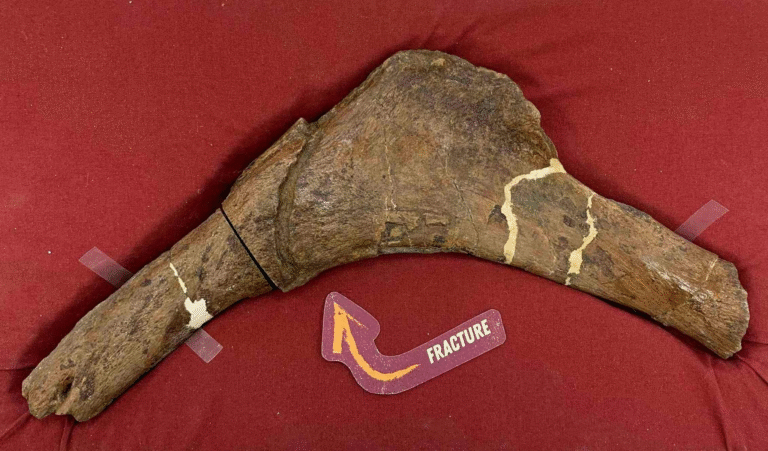Saturn’s Icy Moon Enceladus Is Losing Less Ice Than We Thought — New Supercomputer Simulations Reveal Surprising Details

Saturn’s small, bright moon Enceladus has fascinated scientists for nearly two decades — ever since NASA’s Cassini spacecraft discovered immense geysers blasting water vapor and ice particles into space from its south polar region. These spectacular plumes not only form one of Saturn’s faint outer rings but also point to something far more exciting beneath the surface: a subsurface ocean that could potentially harbor life.
Now, a new study has refined our understanding of just how active Enceladus really is. Using advanced supercomputer simulations, researchers have found that the moon is ejecting 20 to 40 percent less ice mass than earlier studies suggested. While the geysers are still spectacular, this lower estimate paints a more accurate picture of the moon’s activity — and what it means for its hidden ocean below.
Decoding Enceladus with Supercomputers
The study, published in the Journal of Geophysical Research: Planets on August 29, 2025, was led by Arnaud Mahieux from the Royal Belgian Institute for Space Aeronomy, working with collaborators at the University of Texas at Austin. The team used powerful computers at the Texas Advanced Computing Center (TACC) — specifically the Lonestar6 and Stampede3 systems — to run complex models that simulate the behavior of Enceladus’s icy plumes in incredible detail.
These aren’t ordinary simulations. The researchers used a method called Direct Simulation Monte Carlo (DSMC) — a computational technique that models how gas and ice particles move, collide, and exchange energy in a plume. Imagine tracking millions of microscopic particles as they shoot out from Enceladus’s surface, collide with one another, and drift into the vacuum of space. That’s what DSMC does, step by step, at the microsecond scale.
Mahieux and his team built upon earlier research they published in 2019, but with major improvements. In their earlier models, running a single simulation could take up to 48 hours. Now, thanks to new mathematical shortcuts and better parameterizations, the same simulations can be done in just a few milliseconds — allowing scientists to explore far more scenarios and refine their understanding of what’s really happening beneath Enceladus’s icy crust.
What the Simulations Revealed
Using Cassini’s data — including measurements taken when the spacecraft flew directly through Enceladus’s plumes — the researchers adjusted their models to reproduce what Cassini saw. By matching simulated plume behavior to observed data, they could estimate key parameters that were previously unknown or uncertain.
Some of the new insights include:
- Lower Ice Mass Loss: Enceladus ejects 20–40% less ice and water vapor into space than most previous estimates indicated. This means the moon’s cryovolcanic activity is still impressive but slightly more modest than scientists once thought.
- Vent Temperature: The models suggest that the material exiting the vents does so at temperatures between 44 and 61 Kelvin (that’s roughly -229°C to -212°C). It’s frigid by human standards but warm enough to keep water vapor in motion under Enceladus’s conditions.
- Particle Size: Ice grains being launched into space are typically about 1 micron in radius — that’s one-millionth of a meter. These tiny particles scatter sunlight, creating the visible glow of Saturn’s E ring.
- Modeling Extent: Thanks to TACC’s computing power, the simulations could now extend from the moon’s surface up to 10 kilometers above it, showing how the plumes expand and thin out as they escape into space.
The study also confirmed that Enceladus’s weak gravity is unable to hold back much of this material — meaning that the moon constantly loses small amounts of ice to space. Over time, this process contributes to Saturn’s ring system, forming a delicate band of icy material orbiting the planet.
Why These Results Matter
At first glance, lowering the estimated ice loss might not sound like a big deal. But in planetary science, small changes in the numbers can lead to big changes in understanding.
If Enceladus is losing less ice than previously believed, it suggests its subsurface ocean might be more stable and longer-lived. The moon could maintain its internal heat and liquid water over geological timescales — improving its odds of being habitable.
It also helps refine our models of how Enceladus’s plumes work. The geometry and activity of the vents — often called “tiger stripes” — depend on subsurface pressure, temperature, and tidal forces from Saturn. Knowing the correct mass flow rates helps scientists estimate how energy and materials move between the ocean and the surface.
For future missions, this information is crucial. Space agencies like NASA and the European Space Agency (ESA) are already planning next-generation missions to Enceladus. Some proposals involve flybys through the plumes, while others imagine landers that could drill through the ice to reach the ocean directly. Accurate estimates of plume density and speed are essential for designing instruments, protecting spacecraft, and knowing where to sample.
The Power Behind the Discovery
Running such detailed simulations required enormous computing resources. The Lonestar6 and Stampede3 supercomputers at TACC each have thousands of high-performance processors capable of performing trillions of calculations per second.
By taking advantage of this power, the researchers could model millions of molecules interacting in low-pressure, near-vacuum conditions. This allows the team to study plume dynamics in conditions that are impossible to reproduce on Earth.
According to the team’s findings, the improved models better capture the micro-level physics — how water molecules and ice grains behave when launched into space from a vent. Earlier models were less sophisticated and couldn’t handle the same range of pressures or collision dynamics. Now, researchers can simulate realistic scenarios that match Cassini’s observations more closely than ever before.
A Tiny Moon with a Big Mystery
Enceladus might only be 313 miles (504 kilometers) across — about one-seventh the diameter of our Moon — but it’s one of the most intriguing worlds in the solar system.
Located deep in the cold outer solar system, beyond the “snow line”, Enceladus is part of a family of icy moons orbiting the giant planets Saturn, Jupiter, Uranus, and Neptune. Despite its small size, it has an internal ocean of liquid water beneath an icy crust, kept warm by tidal heating — the constant gravitational flexing caused by Saturn’s enormous pull.
The plumes erupting from Enceladus’s south pole act like natural vents to that hidden ocean. When Cassini flew through them in 2008, it detected water vapor, carbon dioxide, methane, and organic molecules — the same building blocks that make up life on Earth. Later analyses even found complex organics containing nitrogen and oxygen.
This makes Enceladus one of the top candidates for extraterrestrial habitability in our solar system. The combination of liquid water, heat, and organic molecules ticks nearly every box for a potentially habitable environment.
The Bigger Picture: What Lies Beneath
Scientists believe Enceladus’s internal ocean is in contact with a rocky core, which could allow chemical reactions similar to those that occur around hydrothermal vents on Earth’s ocean floors. On our planet, these environments teem with microbial life, powered not by sunlight but by chemical energy.
If similar processes occur on Enceladus, its ocean might support microbial ecosystems — completely independent of sunlight.
The plumes give scientists a unique advantage. Instead of drilling through miles of ice, spacecraft can sample material ejected naturally into space. By analyzing the chemistry of these particles, we can learn about the moon’s ocean without ever touching its surface.
The new simulation results — showing lower but more precisely defined mass flow rates — will help mission designers understand exactly how dense those plumes are and what instruments will need to detect or capture them.
Looking Ahead: Missions and Future Exploration
NASA’s upcoming Dragonfly mission to Titan (another of Saturn’s moons) is a step toward exploring icy worlds, but Enceladus remains high on the wish list for future missions. Concepts like Enceladus Orbilander or Enceladus Life Finder (ELF) propose orbiting and then landing near the plumes to collect samples directly.
With new models like the one from Mahieux’s team, engineers will know what kind of particle densities and velocities to expect, allowing them to design sampling systems capable of withstanding or capturing the icy jets.
The European Space Agency has also shown interest in coordinated missions, possibly sending orbiters or landers that could perform long-term studies. By the 2030s or 2040s, it’s possible we could see a dedicated mission to Enceladus designed to answer the biggest question of all: Is there life beneath its icy shell?
Why This Matters for Science and Humanity
Enceladus has transformed from a small, icy moon into a key player in humanity’s search for life beyond Earth. Every new piece of information — from Cassini’s discoveries to the latest supercomputer simulations — refines our picture of this strange and beautiful world.
Even the finding that Enceladus is losing less ice than previously believed is valuable. It suggests a more stable, enduring ocean, one that might have existed for billions of years — long enough for life to potentially emerge.
Thanks to supercomputers like those at TACC, scientists can now simulate these alien environments in extraordinary detail. Just a decade ago, running such models was impossible. Today, they bring us one step closer to understanding what’s happening deep beneath that frozen crust — and what secrets might lie within.
Research Reference:
Enceladus Water Plume Modeling Using DSMC — Journal of Geophysical Research: Planets (A. Mahieux et al., 2025)





